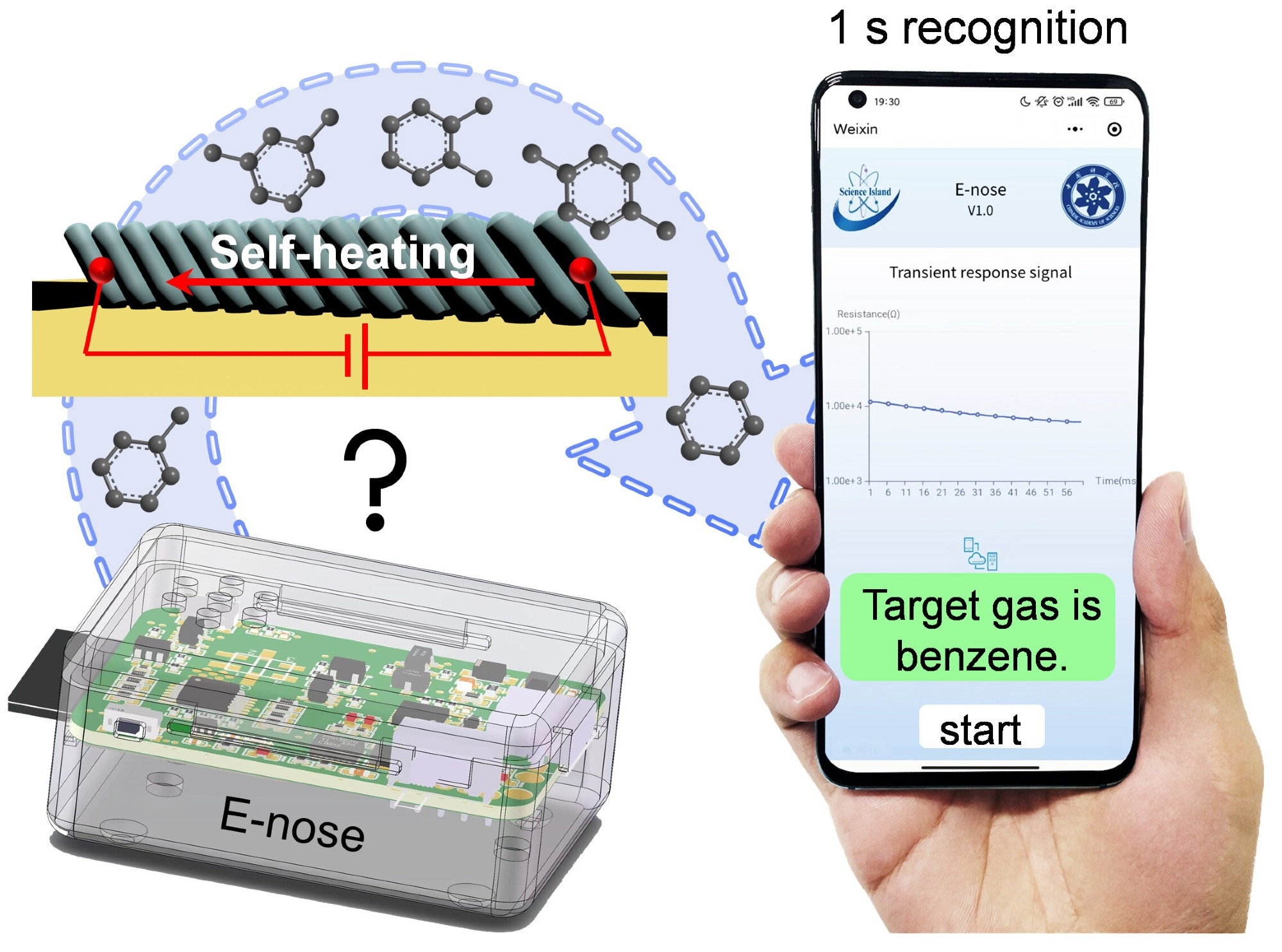
Smart E-nose system based on self-heating temperature modulation. Image Credit: Li Meng
The new e-nose can distinguish between various target gas molecule types in less than a second thanks to its self-heating modulation technique.
Using e-nose, which consists of non-selective semiconductor gas sensors, significant advancements have been made in the detection of gas molecules. The ability to extract sufficient molecular features in less than a second is still a significant barrier to the early warning applications of e-nose for explosive or deadly gases.
This study developed a novel method for modulating and controlling temperature as a substitute for the traditional approach that relies on external heaters. Oblique angle deposition (OAD) was utilized to create a tungsten trioxide (WO3) nanorod film, which served as both a stable self-healing layer and a sensitive sensing layer. By self-heating temperature modulation, the OAD WO3 sensor can produce enough electrical response features because of its ultrafast (∼20 μs) thermal relaxation time.
With this progress, 12 gas molecules can be accurately discriminated in 0.5–1 seconds, an order of magnitude faster than state-of-the-art e-noses.
A wireless smart e-nose system was also created to accurately and quickly identify target gases in backgrounds of ambient air.
The team claims this advancement highlights the e-nose’s possible uses in public health and homeland security.
Journal Reference:
Li, M., et al. (2023) Prompt Electronic Discrimination of Gas Molecules by Self-Heating Temperature Modulation. American Chemical Society. doi.org/10.1021/acssensors.3c01839